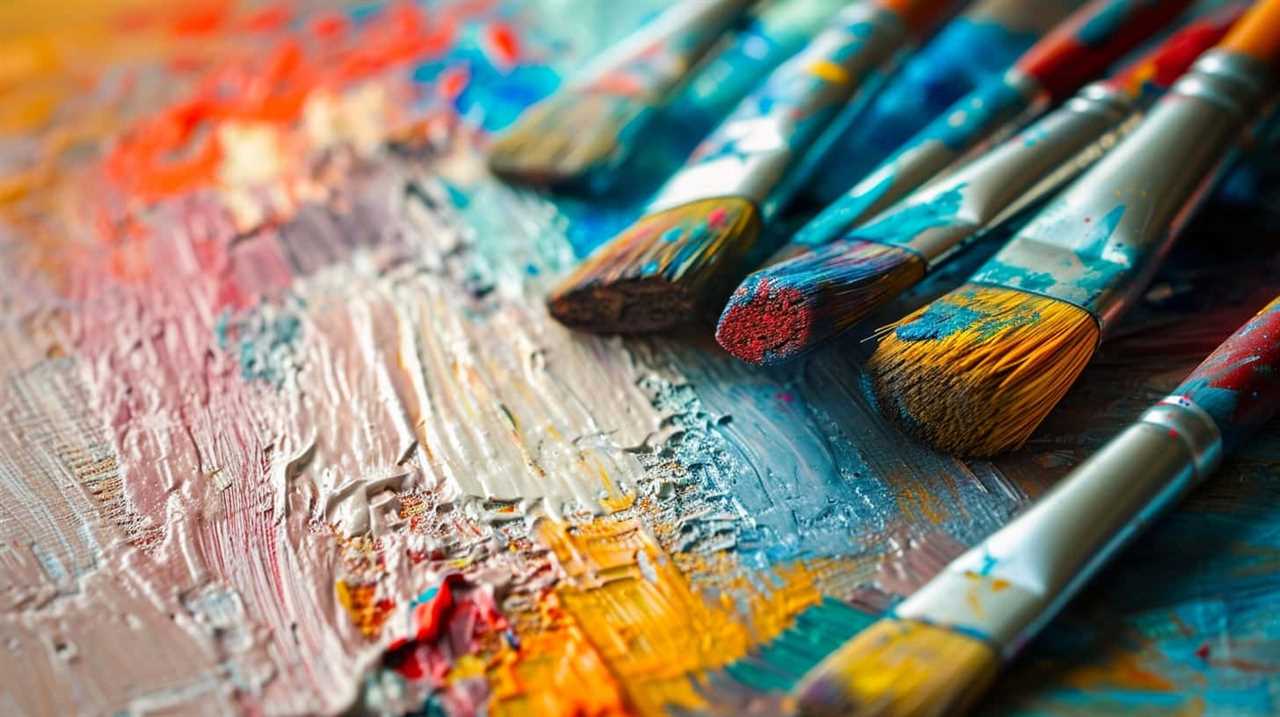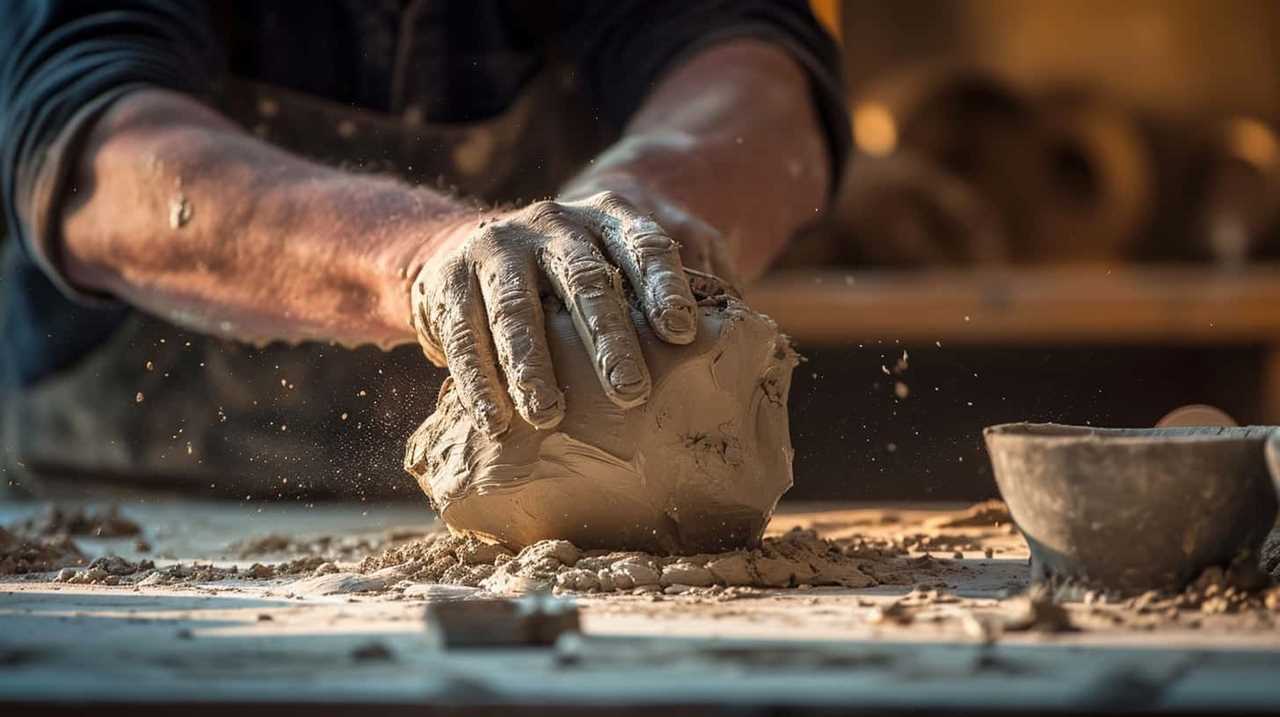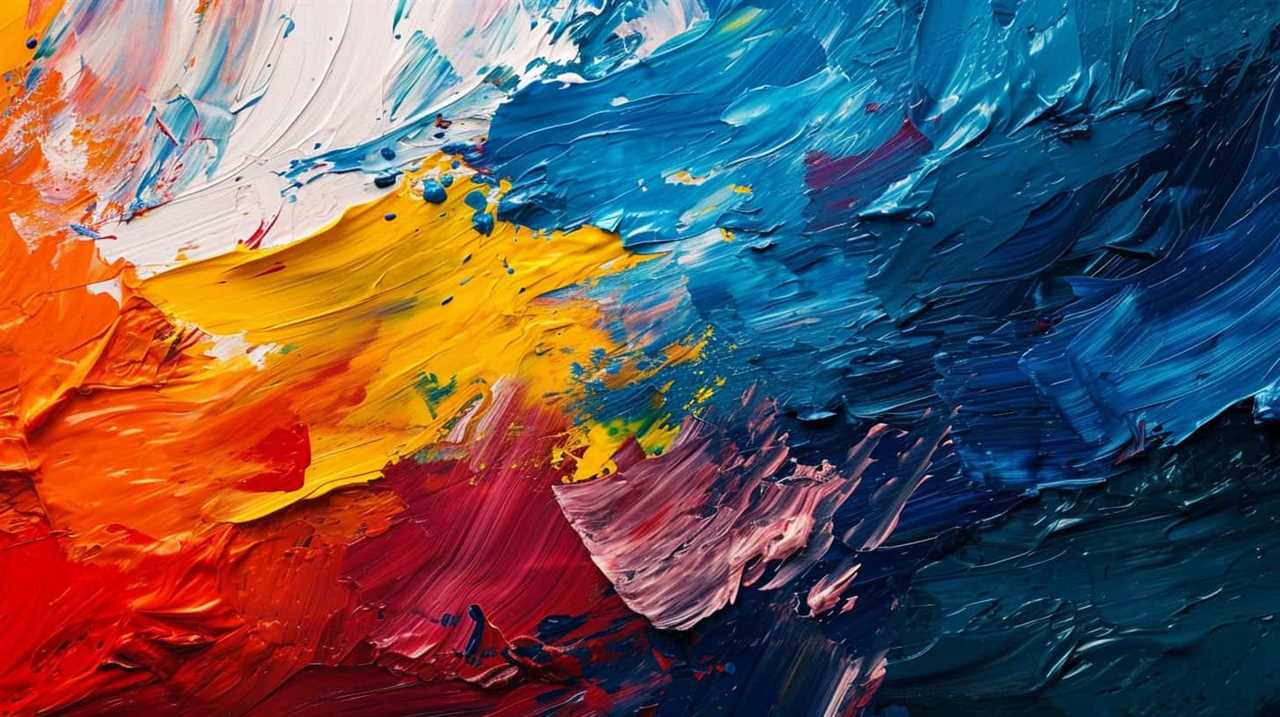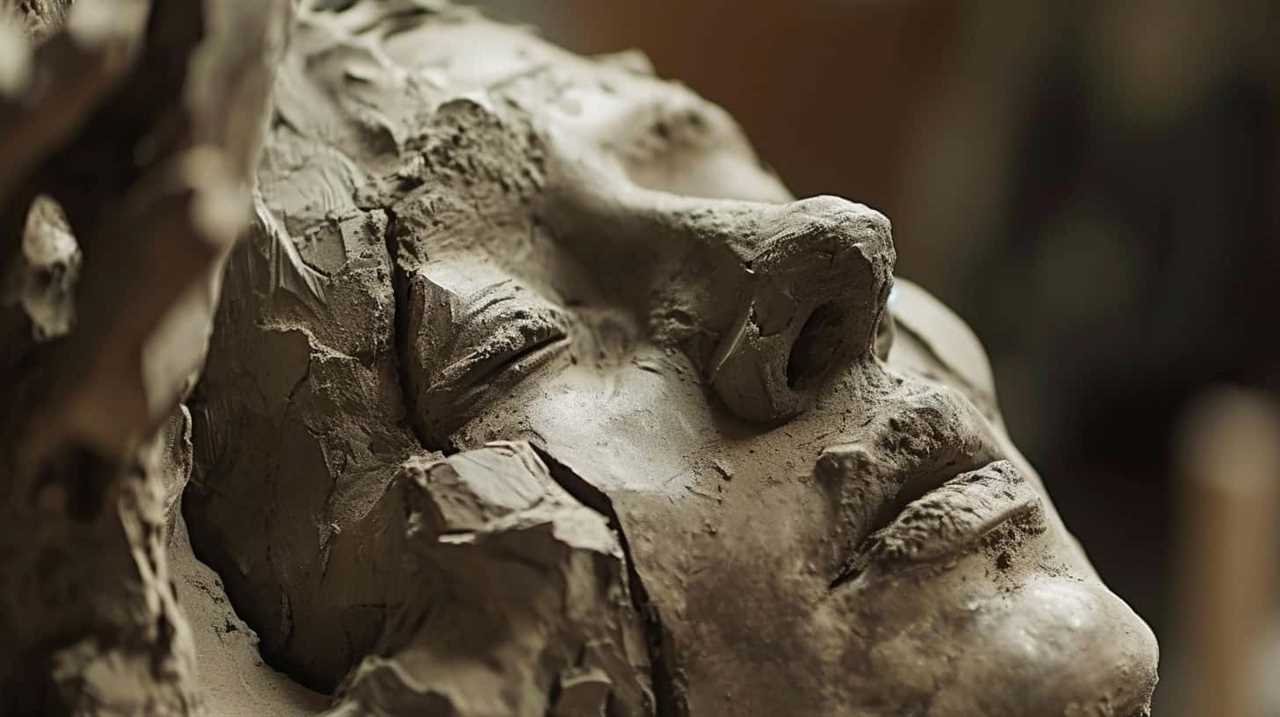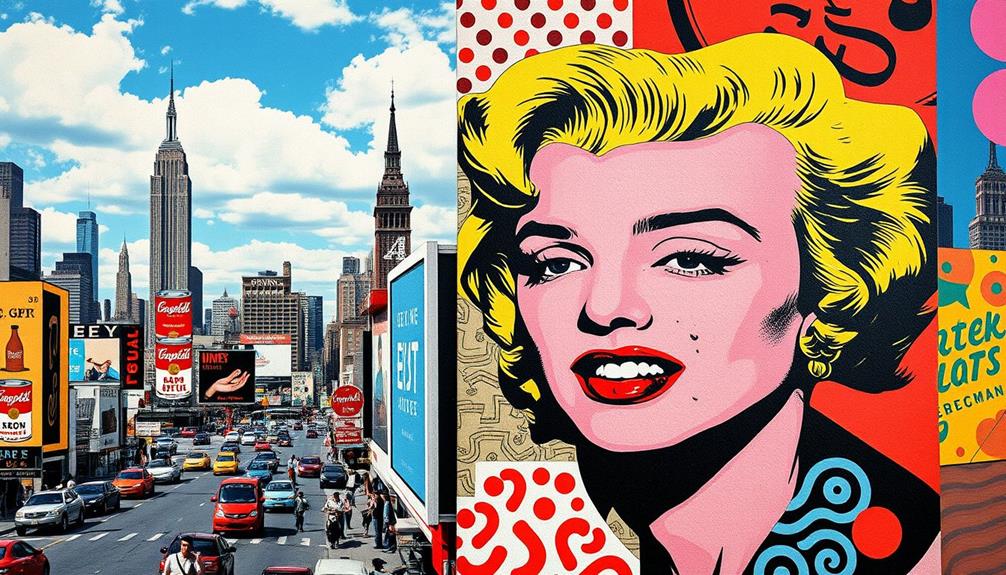Exploring the transformative power of creativity, we follow the triumphs of eight artists as they conquer personal obstacles.
These artistic masters, through their unwavering determination and resilience, conquered inner demons and societal barriers.
Their stories serve as a testament to the indomitable human spirit and the ability to transform adversity into artistic brilliance.
Salvador Dali’s surreal journey through darkness, Frida Kahlo’s unwavering resilience in the face of pain, Vincent Van Gogh’s battle with mental health, Georgia O’Keeffe’s triumphant defiance of gender stereotypes, Jackson Pollock’s struggle with addiction, Edvard Munch’s haunting depiction of inner turmoil, Yayoi Kusama’s triumph over mental illness, and Claude Monet’s unwavering strength amidst personal loss – each artist’s journey offers invaluable lessons on overcoming personal struggles and inspiring mastery in our own lives.
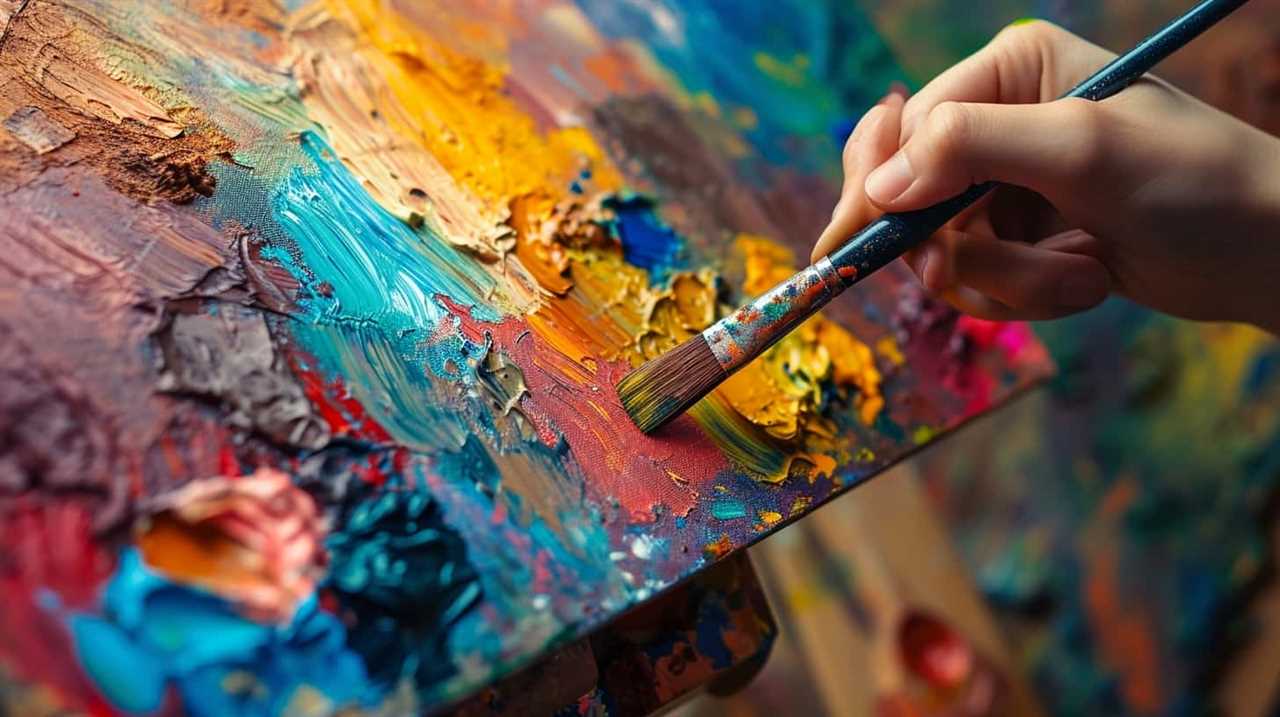
Key Takeaways
- Salvador Dali, Frida Kahlo, Vincent Van Gogh, and Georgia O’Keeffe overcame personal struggles through their art.
- These artists challenged societal norms and stereotypes, particularly Georgia O’Keeffe and Frida Kahlo.
- Art has the transformative power to help individuals overcome personal struggles, serving as a therapeutic outlet, means of self-expression, and invitation to explore the subconscious.
- Artists such as Georgia O’Keeffe, Jackson Pollock, Edvard Munch, Yayoi Kusama, and Claude Monet have had significant influence and impact on the art world.
Salvador Dali’s Journey Through Darkness
In our exploration of artists triumphing over personal struggles, we delve into Salvador Dali’s journey through darkness. Dali’s surrealistic art is renowned for its dreamlike imagery and unconventional symbolism. However, behind the captivating visuals lies a story of personal turmoil that greatly influenced his artistic process.
Dali’s personal struggles, particularly his tumultuous relationship with his father and his battle with depression, played a significant role in shaping his unique style. The impact of these struggles can be seen in his works, where he often depicted distorted figures and fragmented realities. Through his art, Dali was able to express his innermost fears, desires, and anxieties, transforming his pain into a visual language that resonates with viewers.
Dali’s ability to channel his personal struggles into his art demonstrates the therapeutic power of creativity. By immersing himself in his work, he was able to confront his demons and find solace in the act of creation. Through his surrealistic masterpieces, Dali not only confronted his own darkness but also invited others to explore their own subconscious realms.
Frida Kahlo’s Resilience in Pain
Discussing Frida Kahlo’s resilience in pain, we explore how she used art as a means of healing and self-expression. Frida Kahlo, a renowned Mexican artist, endured a lifetime of physical and emotional suffering. From a young age, she battled chronic pain caused by a bus accident that left her with severe injuries. Despite her struggles, Kahlo found solace in creativity, using art as a powerful tool to navigate through her pain.
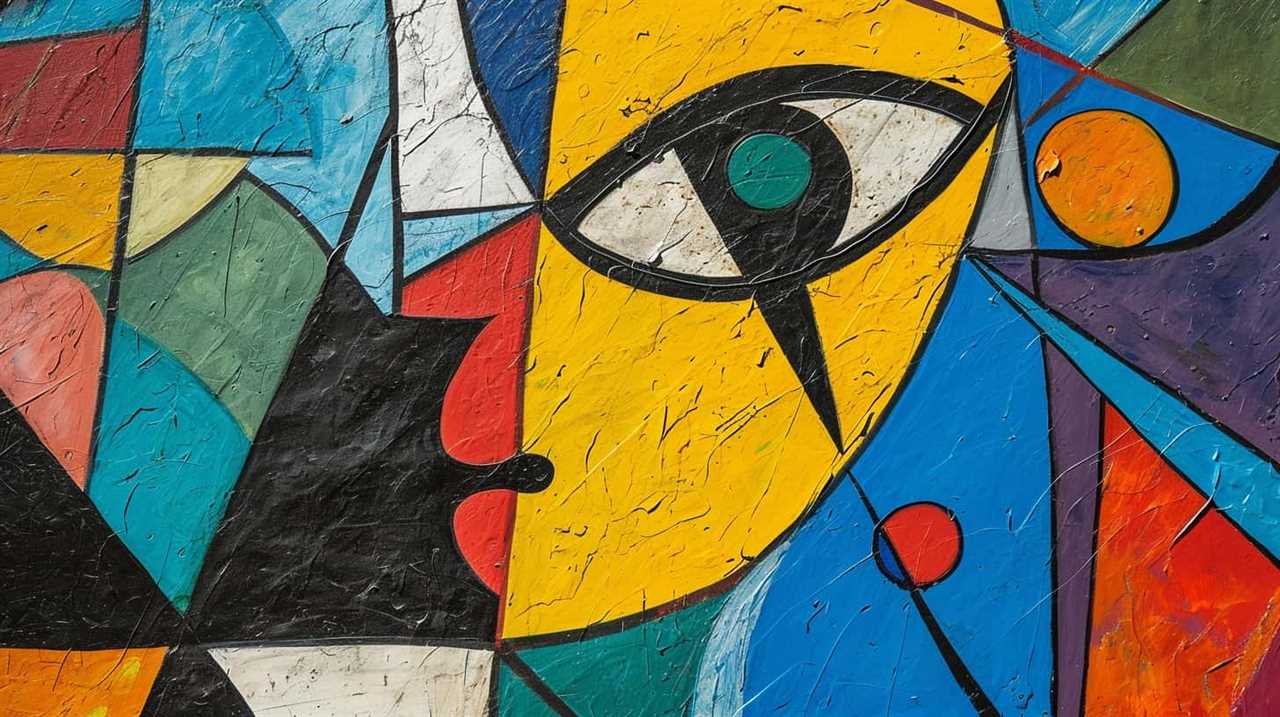
Kahlo’s artistic resilience can be seen in her bold and raw self-portraits. Through her art, she delved deep into her emotions, expressing her pain, anguish, and inner turmoil. She transformed her physical and emotional scars into symbols of strength and resilience. By depicting herself with vibrant colors and intricate symbolism, Kahlo conveyed the complexity of her experiences, inviting viewers to witness her journey of healing.
In addition to her self-portraits, Kahlo explored themes of identity, femininity, and cultural heritage in her art. She used vivid imagery and surrealistic elements to create a visual language that spoke directly to her experiences. Through her art, she challenged societal norms, opening up conversations about gender, disability, and the human condition.
Frida Kahlo’s art not only served as a form of self-expression but also as a means of catharsis and healing. By channeling her pain into her art, she transformed her suffering into something beautiful and meaningful. Her resilience in the face of adversity continues to inspire and empower artists and individuals worldwide.
Vincent Van Gogh’s Battle With Mental Health
We personally relate to Vincent Van Gogh’s battle with mental health. His struggles and triumphs resonate deeply with us, as we too have experienced the complexities of navigating our own mental well-being. Van Gogh’s artistic legacy and the societal perception of mental health intertwine in a compelling narrative, shedding light on the profound connection between creativity and mental turmoil.
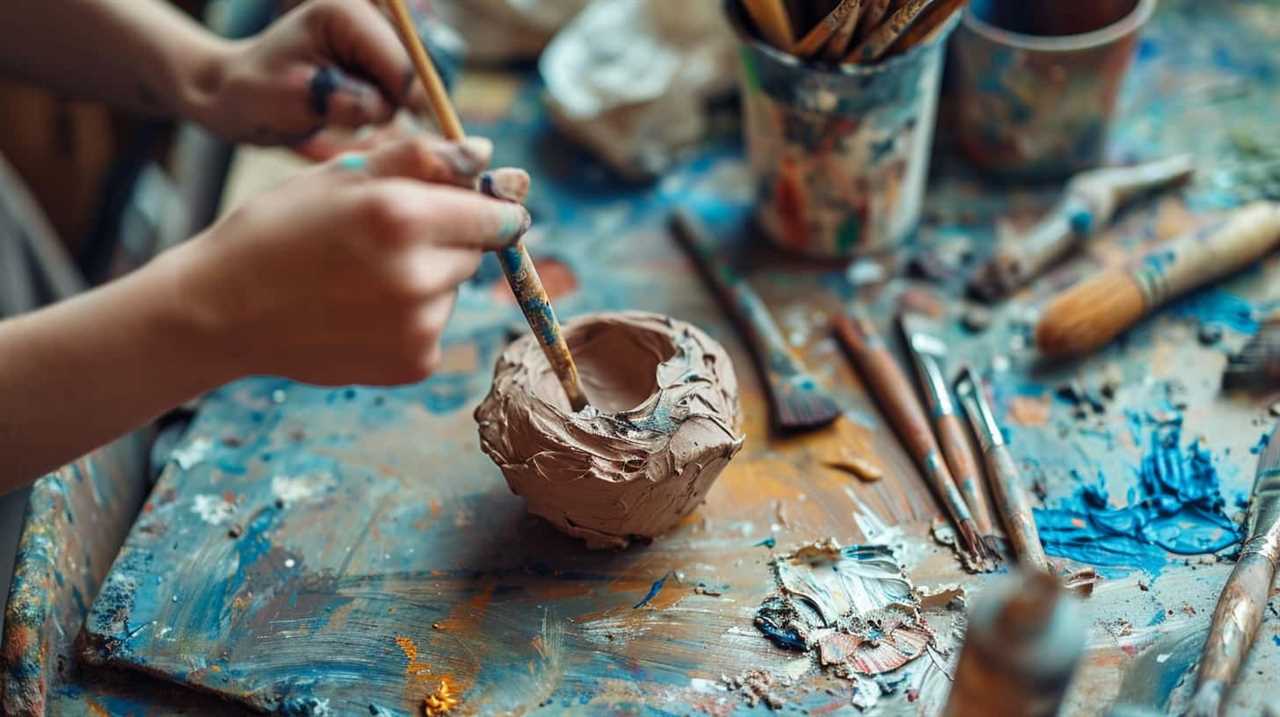
To paint a picture for our audience, let’s delve into the intricacies of Van Gogh’s journey:
- The swirling brushstrokes: Van Gogh’s paintings, characterized by vibrant colors and bold brushwork, reflect the intensity of his emotions. They serve as visual representations of his inner turmoil, providing a glimpse into the chaotic landscape of his mind.
- The sunflower symbolism: Van Gogh’s iconic sunflower paintings evoke both beauty and melancholy. They reveal his relentless pursuit of artistic perfection, while also symbolizing his longing for happiness and stability.
- The ear incident: Van Gogh’s infamous act of self-harm, when he cut off a portion of his own ear, starkly illustrates the depths of his mental anguish. This tragic event highlights the desperate measures individuals may resort to when grappling with mental health challenges.
- The legacy of resilience: Despite the hardships he faced, Van Gogh’s artistic legacy endures. His ability to channel his pain into profound works of art serves as an inspiration for others, reminding us of the power of creativity as a means of healing and self-expression.
Vincent Van Gogh’s battle with mental health sheds light on the complex relationship between artistic genius and psychological struggles. His story challenges societal perceptions of mental health, urging us to view it not as a weakness, but as an integral part of the human experience.
Georgia O’keeffe’s Triumph Over Gender Stereotypes
When it comes to triumphing over gender stereotypes, Georgia O’Keeffe is a name that stands out. She defied societal norms and challenged the traditional perception of women in art.
O’Keeffe’s work not only showcased her incredible talent, but also served as a powerful expression of feminism. Through her bold and captivating paintings, she paved the way for future generations of female artists, proving that art knows no gender boundaries.
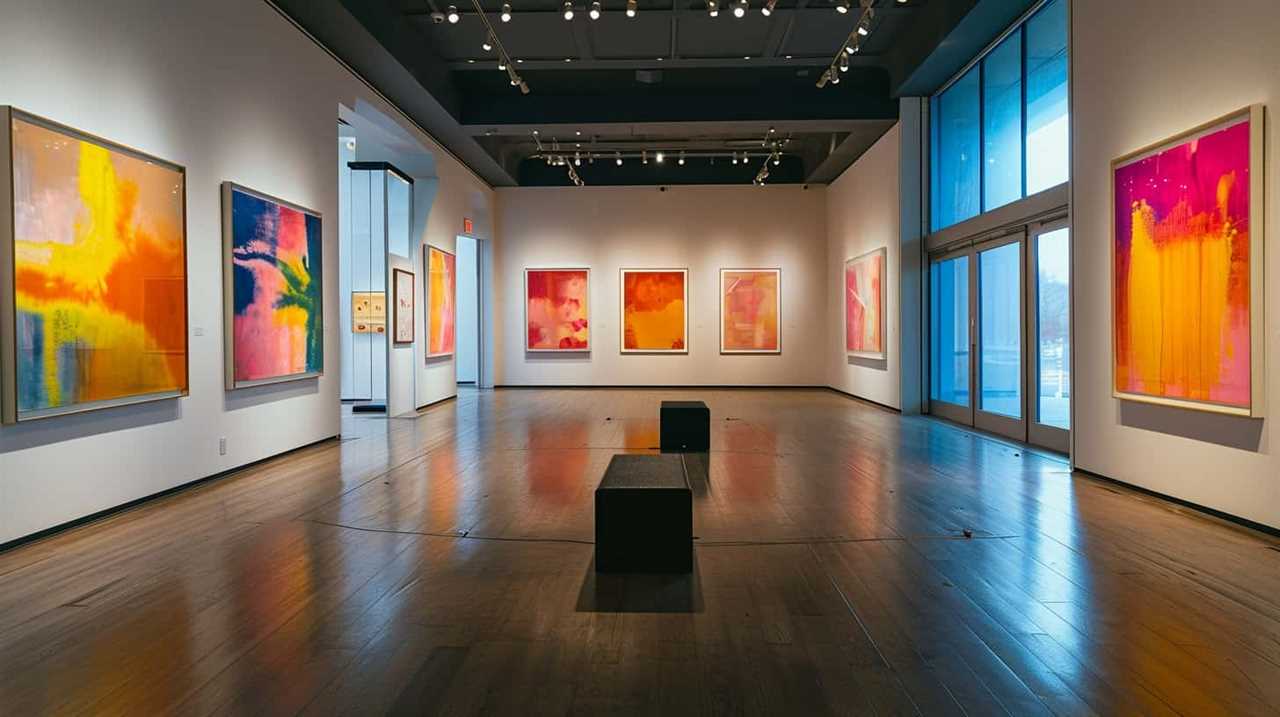
O’keeffe Challenging Societal Norms
O’Keeffe’s defiance of gender stereotypes propelled her to challenge societal norms through her art. Her determination to break boundaries and challenge conventions shines through in her artistic endeavors.
Consider the following:
- Bold subject matter: O’Keeffe’s choice to paint close-up flowers and abstract landscapes challenged the traditional portrayal of women in art, which often centered around domestic scenes and portraits.
- Intimate perspective: By zooming in on everyday objects, O’Keeffe’s work invited viewers to see the world through her eyes, defying the male gaze and offering a fresh perspective.
- Minimalism and abstraction: O’Keeffe’s use of simplified forms and bold colors pushed the boundaries of representation, encouraging viewers to question traditional notions of beauty and meaning.
- Independent spirit: O’Keeffe’s decision to live in the rugged landscapes of New Mexico and pursue her art on her own terms showcased her fierce independence and refusal to conform to societal expectations.
Through her art, O’Keeffe challenged societal norms, paving the way for future generations of artists to do the same.
Art as Feminist Expression
How did Georgia O’Keeffe triumph over gender stereotypes through art? Georgia O’Keeffe was a trailblazer in the art world, using her work to challenge societal norms and pave the way for the feminist art movement. Through her empowering artistic expression, O’Keeffe shattered gender stereotypes and established herself as a prominent female artist in a male-dominated industry. She fearlessly explored themes of female sexuality and the beauty of the female form, often depicting flowers and landscapes in a way that celebrated the power and strength of femininity. O’Keeffe’s art not only challenged traditional gender roles, but also inspired other women artists to embrace their own unique perspectives and challenge societal expectations. Her contributions to the feminist art movement continue to be celebrated and have left a lasting impact on the art world.
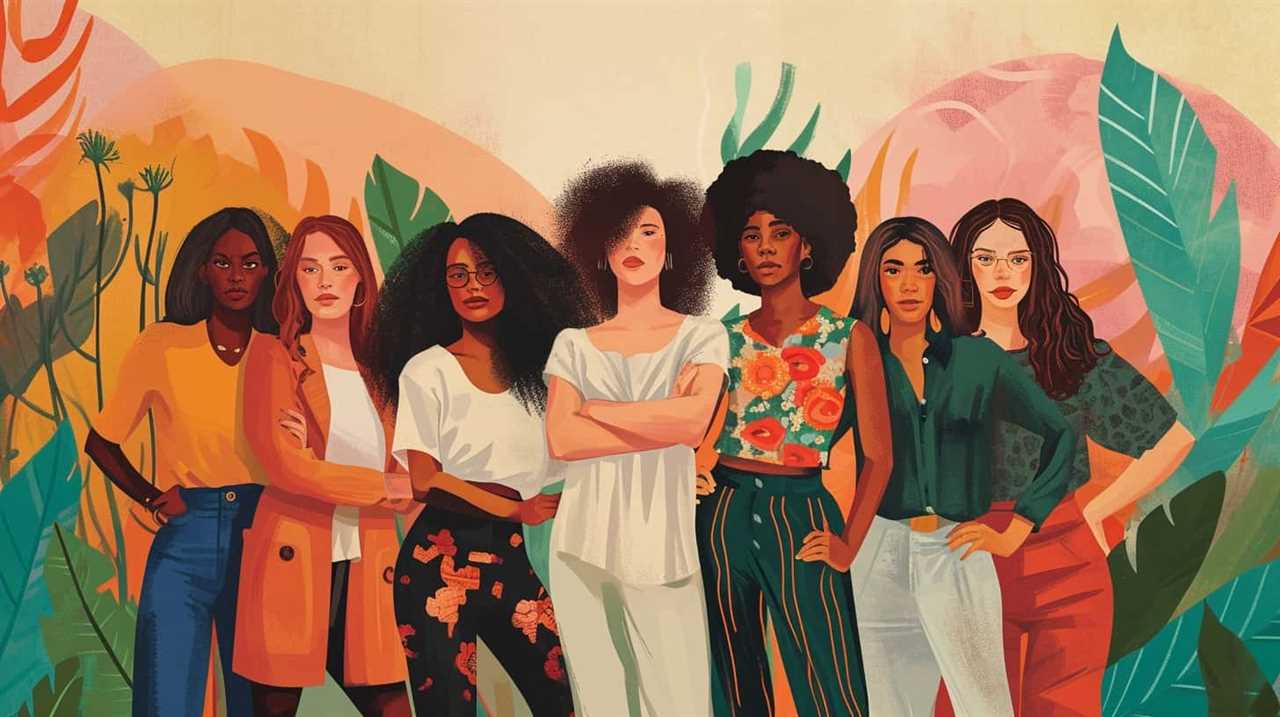
| Feminist Art Movement | Empowering Artistic Expression | Breaking Gender Stereotypes |
|---|---|---|
| O’Keeffe’s art played a significant role in the feminist art movement, which sought to challenge the male-dominated art world and give voice to women artists. | Through her art, O’Keeffe expressed her own unique perspective and empowered other women to do the same. Her bold and unconventional representations of female subjects challenged societal norms and expanded the definition of beauty. | O’Keeffe’s art broke through gender stereotypes by depicting women as powerful and independent beings, rather than passive objects. She portrayed the female form with strength and confidence, challenging traditional notions of femininity. |
Jackson Pollock’s Struggles With Addiction
When it comes to discussing Jackson Pollock’s struggles with addiction, it’s impossible to ignore the profound impact it had on his artistic process. Pollock’s addiction not only influenced his art style but also became an integral part of his creative expression.
However, it’s essential to explore not only the destructive effects of addiction but also the inspiring journey of Pollock’s recovery and how it shaped his later works.
Impact on Artistic Process
Our struggles with addiction greatly influenced our artistic process, as seen in the work of Jackson Pollock. Addiction can have a profound impact on creativity, shaping the way artists cope with their struggles. In Pollock’s case, his addiction allowed him to explore new avenues of artistic expression, pushing the boundaries of traditional painting techniques.
- Fluidity: Pollock’s addiction to alcohol contributed to his signature drip painting style, as he experimented with pouring and splattering paint onto canvases.
- Emotional Release: Addiction often serves as a coping mechanism, and for Pollock, painting became a way to channel his emotions and find solace.
- Uninhibited Expression: Through his addiction, Pollock was able to let go of inhibitions and embrace spontaneity, resulting in raw and unfiltered artwork.
- Subconscious Exploration: Addiction can blur the lines between the conscious and subconscious, enabling Pollock to tap into his innermost thoughts and emotions during the creative process.
Pollock’s struggles with addiction not only shaped his artistic process but also left a lasting impact on the art world, inspiring countless artists to embrace experimentation and individuality.

Influence on Art Style
The addiction struggles of Jackson Pollock greatly influenced our art style, shaping the unique and experimental approach we took in our paintings. Pollock’s battle with addiction not only affected his personal life but also had a profound impact on his artistic expression.
One of the ways his addiction influenced our art style was through the influence on our color palette. Like Pollock, we began to explore vibrant and bold colors, using them to convey emotions and energy in our work.
His struggles also had a significant impact on the subject matter we chose to portray. We delved into themes of chaos, inner turmoil, and the human condition, mirroring Pollock’s own inner struggles.
Through his example, we learned that art can serve as a powerful outlet for personal catharsis and self-expression.
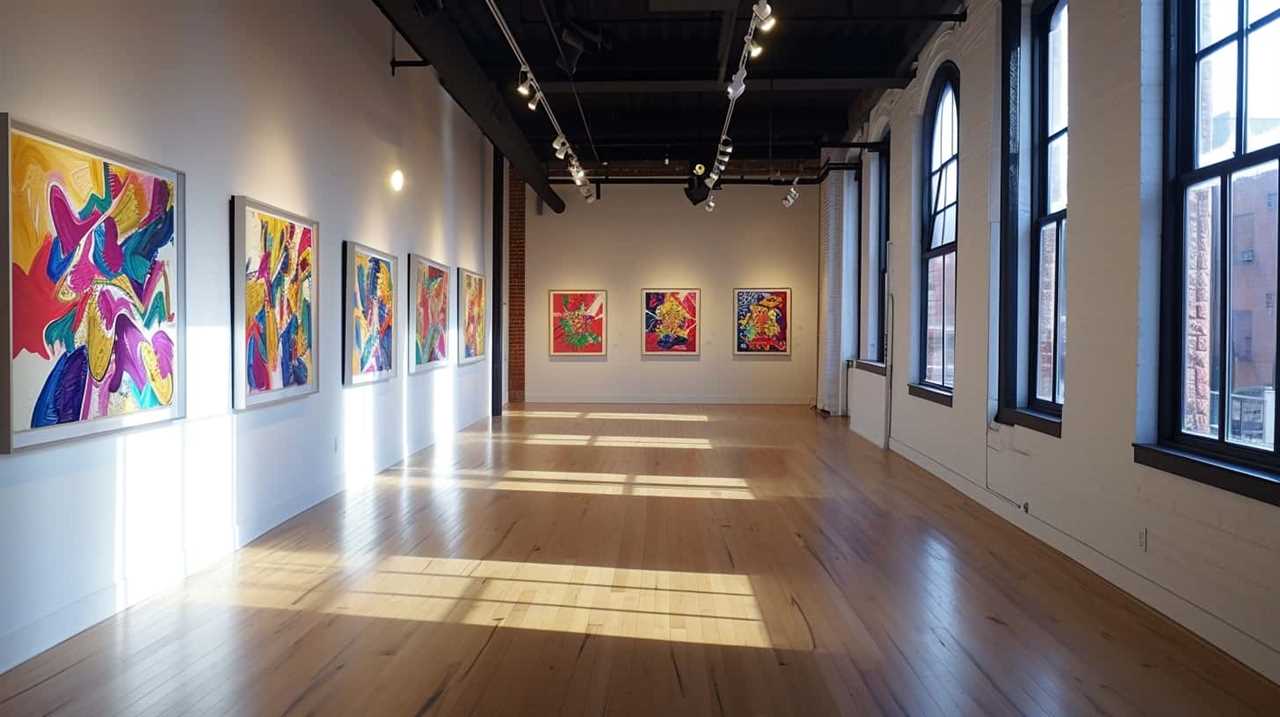
Road to Recovery
After years of battling addiction, Jackson Pollock finally embarked on the road to recovery, seeking help and making significant strides in overcoming his personal struggles. His journey towards healing involved the use of various rehabilitation methods and the development of effective coping mechanisms. To paint a picture for the audience, here are some key aspects of Pollock’s recovery:
- Pollock actively participated in therapy sessions, where he explored the underlying causes of his addiction and learned healthier ways to cope with stress and emotions.
- He engaged in art therapy, using his creative expression as a powerful tool for self-reflection and healing.
- Pollock adopted a structured routine, which provided stability and a sense of purpose in his life.
- He surrounded himself with a supportive network of friends and family who encouraged and held him accountable throughout his recovery.
As Pollock’s journey progressed, he began to find solace and inspiration in his art, eventually leading to a transformative period in his career. This newfound strength and perspective allowed him to explore deeper emotional themes in his work, as we’ll see in the subsequent section on Edvard Munch’s depiction of inner turmoil.
Edvard Munch’s Depicting Inner Turmoil
In triumphing over personal struggles, we witness Edvard Munch’s powerful representation of inner turmoil through his art. Munch’s influence on expressionism can’t be overstated. His ability to capture the complexity of human emotions and the intensity of psychological experiences revolutionized the art world. Munch’s use of symbolism in his works adds another layer of depth and meaning to his exploration of inner turmoil.
One of Munch’s most famous works, ‘The Scream,’ encapsulates the essence of inner turmoil. The distorted figure and the swirling colors evoke a sense of anxiety and despair that resonates with viewers on a deeply personal level. The painting is a visual representation of the artist’s own struggles with mental health, as he once said, ‘I was walking along the road with two friends. The sun was setting. I felt a breath of melancholy. Suddenly the sky turned blood-red. I stopped, leaned against the railing, deathly tired. And I heard a voice within me, ‘You aren’t well.”
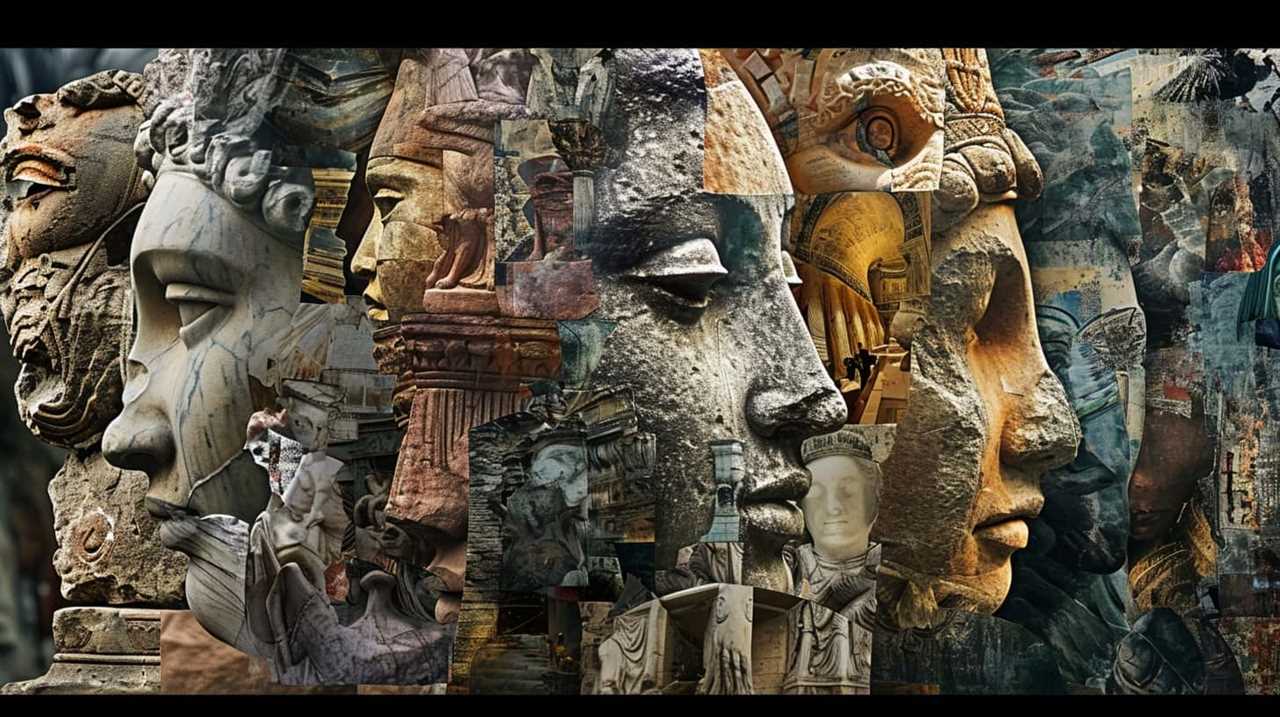
Munch’s ability to translate his own personal struggles into universal experiences is what makes his art so impactful. Through his use of vivid colors, distorted figures, and symbolic imagery, Munch invites viewers to confront their own inner turmoil and find solace in the shared human experience. His art serves as a reminder that triumphing over personal struggles isn’t about eradicating them completely, but rather about embracing them and finding beauty in the chaos.
Yayoi Kusama’s Overcoming Mental Illness
We witnessed Yayoi Kusama triumphing over mental illness through her art. Her journey is a testament to the power of creative expression and the therapeutic effects it can have on one’s mental well-being.
Kusama’s art became her sanctuary, a place where she could confront and release her inner demons. Here’s a glimpse into her remarkable journey:
- Polka Dots as Healing: Kusama’s signature polka dots became symbols of healing and transformation. By meticulously painting thousands of dots, she found solace and a sense of control over her chaotic thoughts.
- Infinity Rooms as Escapes: Kusama’s immersive installations, such as her Infinity Rooms, provided an escape from reality. They allowed her to enter a world of infinite possibilities, free from the constraints of her mental illness.
- Obsessive Repetition as Catharsis: Kusama’s repetitive patterns and motifs served as a form of catharsis. Through the meticulous repetition of lines and shapes, she was able to channel her anxieties into something beautiful and therapeutic.
- Art as Self-Observation: Kusama used her art as a tool for self-observation and introspection. By creating art that reflected her experiences, she gained a deeper understanding of herself and her struggles.
Yayoi Kusama’s artistic therapy showcases the transformative power of creative expression. Through her art, she not only overcame her mental illness but also inspired countless others to find solace and healing through artistic endeavors.
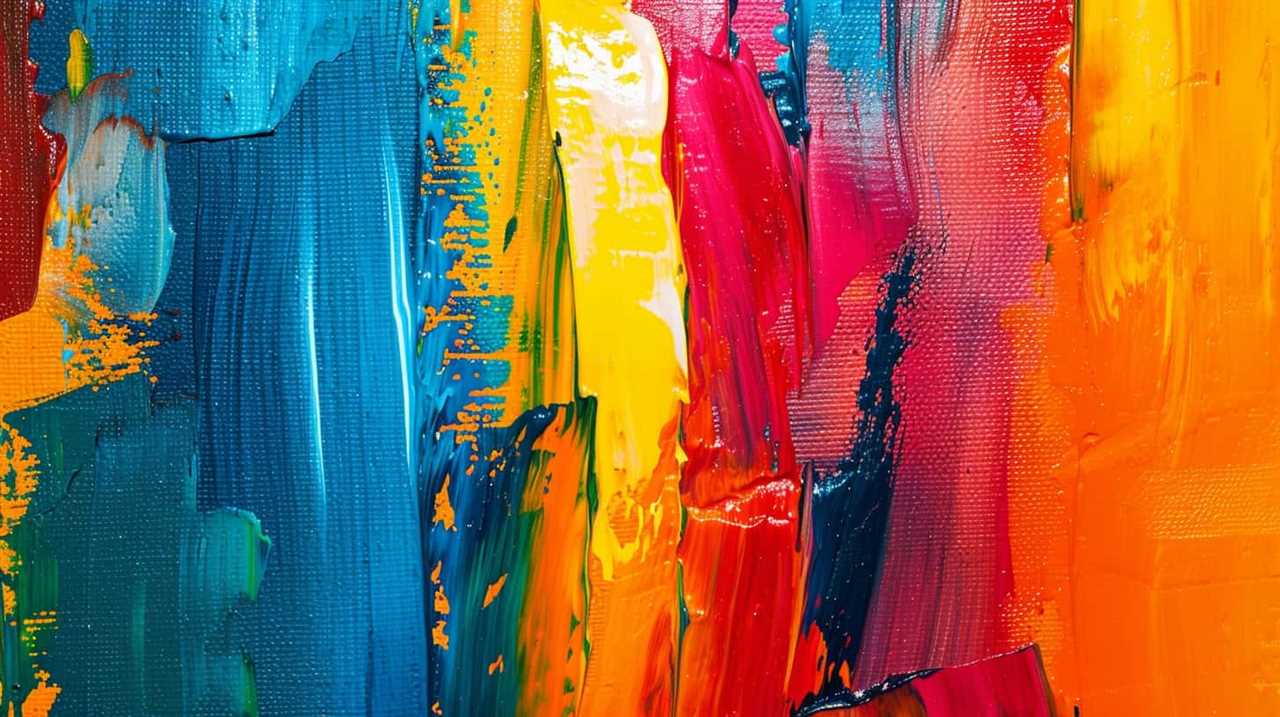
Claude Monet’s Strength Amidst Personal Loss
Continuing from Yayoi Kusama’s triumph over mental illness, Claude Monet’s strength amidst personal loss is evident in his art. Monet, a renowned French painter, faced numerous challenges throughout his life, including the death of loved ones and financial struggles. However, he channeled these hardships into his work, resulting in a remarkable artistic growth that left an indelible mark on the art world.
Monet’s art reflects his resilience and ability to find beauty even in the face of personal tragedy. After losing his first wife, Camille, to illness, Monet’s grief fueled his desire to capture fleeting moments of beauty in nature. His famous series of water lilies and haystacks demonstrate his ability to convey emotion through color and brushwork, giving viewers a glimpse into his inner world.
Furthermore, Monet’s impact on the art movement of Impressionism can’t be overstated. His innovative use of light, color, and brushstrokes challenged traditional artistic conventions, paving the way for a new way of seeing and interpreting the world. His dedication to capturing the ever-changing effects of light and atmosphere inspired a generation of artists and forever changed the course of art history.
Frequently Asked Questions
How Did Salvador Dali’s Journey Through Darkness Affect His Artistic Style?
Dali’s journey through darkness greatly impacted his surrealism. The struggles he faced influenced his use of symbolism in his art, creating a unique and captivating style that continues to inspire and fascinate audiences today.
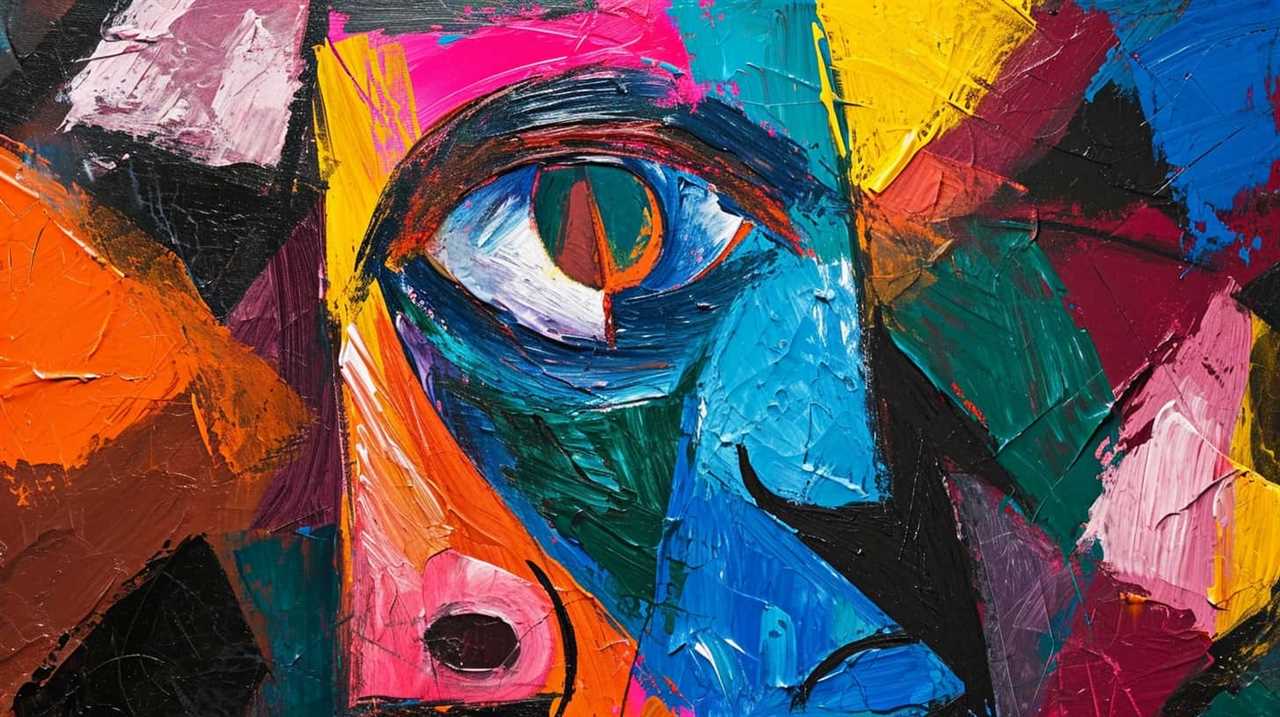
What Specific Techniques Did Frida Kahlo Use to Express Her Resilience in Pain?
Frida Kahlo’s use of symbolism and vibrant colors in her artwork allowed her to express her resilience in pain. By incorporating her personal experiences into her work, she created a powerful visual language that resonates with audiences to this day.
How Did Vincent Van Gogh’s Battle With Mental Health Impact His Relationships With Other Artists?
Vincent van Gogh’s battle with mental health greatly impacted his relationships with other artists. His struggles affected his friendships, causing strain and distance. Additionally, his unique artistic style influenced and inspired fellow artists, leaving a lasting impact on the art world.
In What Ways Did Georgia O’keeffe Challenge and Triumph Over Gender Stereotypes in the Art World?
In challenging gender stereotypes in the art world, Georgia O’Keeffe faced numerous obstacles. However, she employed innovative strategies and broke barriers through her unique artistic style and unwavering determination.
How Did Jackson Pollock’s Struggles With Addiction Influence His Artistic Process and Technique?
Jackson Pollock’s unique artistic process and technique were heavily influenced by his struggles with addiction. We see how his personal demons shaped his art, creating a raw and expressive style that continues to captivate audiences today.
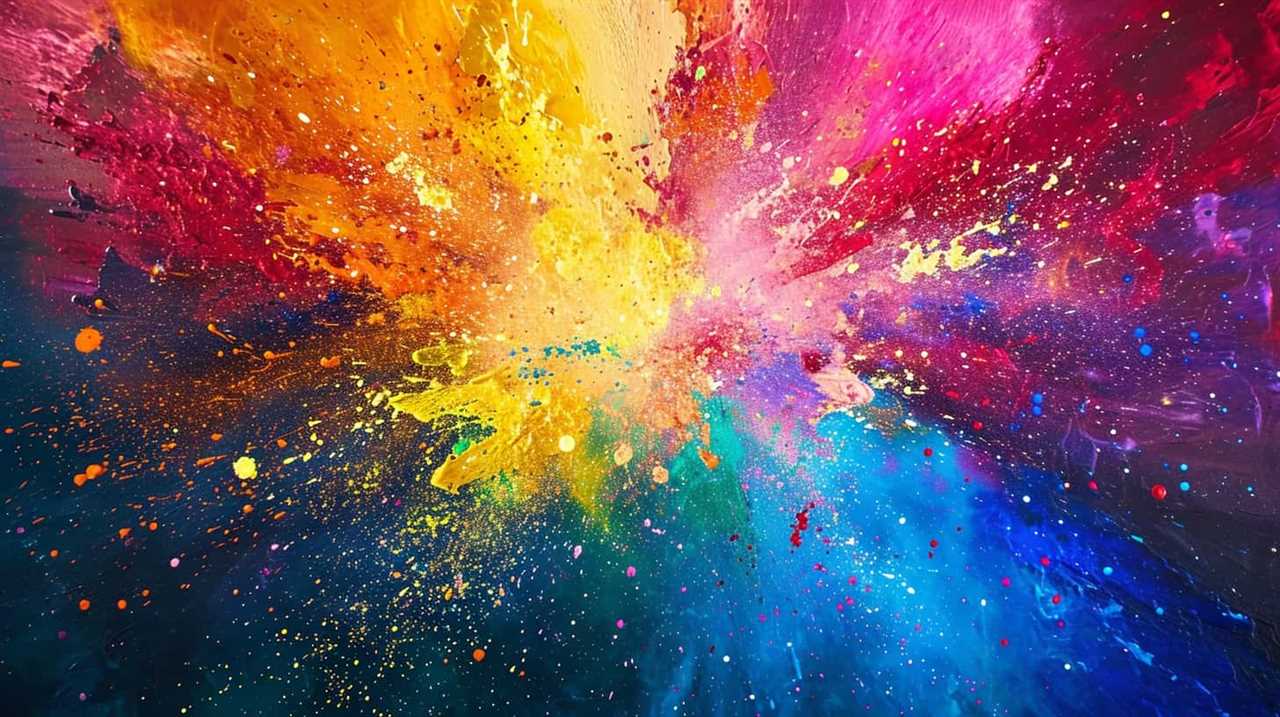
How Have Personal Struggles Influenced Artists’ Perspectives on Today’s Political Landscape?
Many artists on political landscape have been deeply impacted by personal struggles, which have shaped their perspectives on today’s political climate. These experiences have often led to the creation of powerful, thought-provoking art that reflects their unique viewpoints and serves as a commentary on the current state of affairs.
Conclusion
In conclusion, the stories of these eight remarkable artists remind us that triumph can emerge from even the darkest of personal struggles. They teach us the power of resilience, the beauty of authenticity, and the importance of embracing our individual journeys. Through their art, they left a lasting legacy that continues to inspire and captivate audiences today. They truly were the ‘trailblazers’ of their time, paving the way for future generations to fearlessly embrace their own unique paths.
Lauren’s talent in writing is matched by her passion for storytelling. Her love for books and deep understanding of culture and entertainment add a distinct flavor to her work. As our media and press contact, Lauren skillfully bridges the gap between afterQuotes and the broader media landscape, bringing our message to a wider audience.
